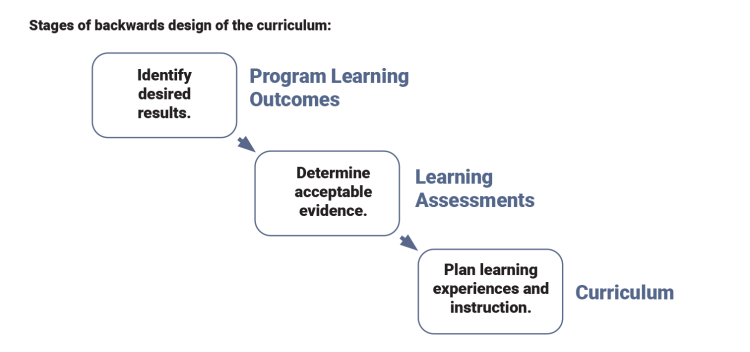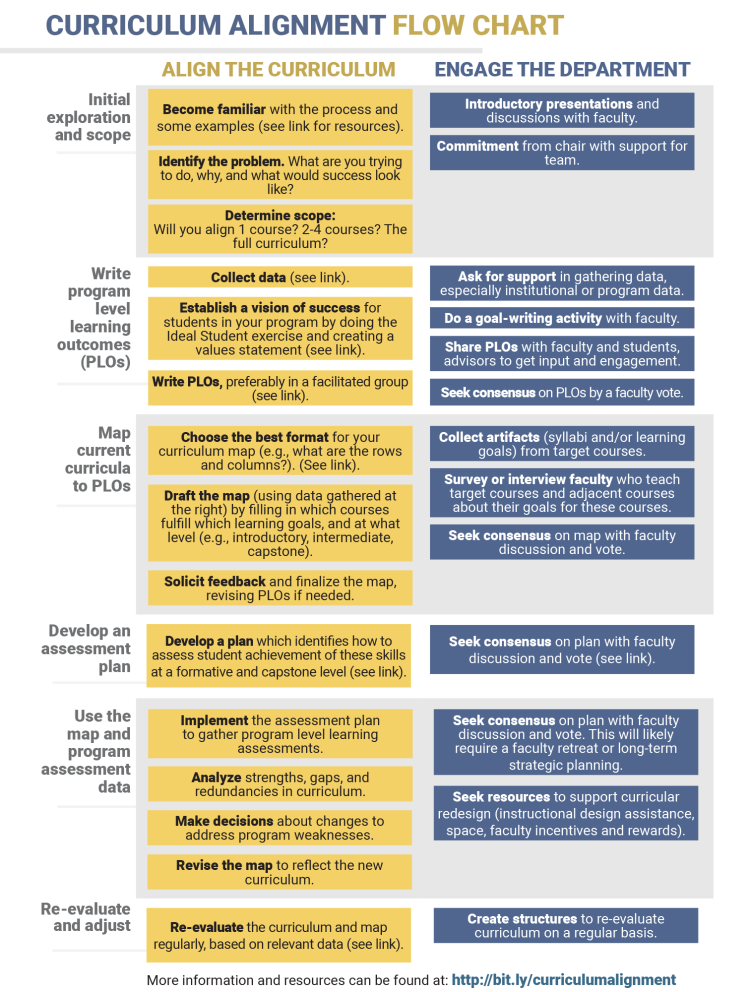Curricular Alignment
 What is curricular alignment?
What is curricular alignment?

Curricular alignment is the process of aligning a program’s curriculum with its goals. It is a part of a high-level backwards design approach to the design of an entire curriculum. In backwards design, one starts by defining the learning goals (in this case, the program level learning outcomes, or PLOs). Those goals then drive the design of assessments and of the educational intervention (in this case, the curriculum itself).
What is a curriculum map?
A key document created in this process is a curriculum map, a spreadsheet or matrix identifying which courses are responsible for addressing, and assessing, specific PLOs. A curriculum map allows for a better understanding of the curriculum, and more deliberate design of that curriculum to achieve the desired outcomes, by identifying strengths, gaps, and redundancies.
What are the steps to aligning a curriculum?
The infographic below illustrates the process of mapping out and aligning the curriculum. While this could be done solo, it would be unlikely to result in actual curricular changes; therefore, we also show where departmental engagement is likely to be important. Ideally, the mapping process should be done as part of a faculty group with an external facilitator. We leave it to the reader to determine how these steps might look for their particular structure.
- Initial exploration and scope
- Write program-level learning outcomes (PLOs)
- Map current curricula to PLOs
- Develop an assessment plan
- Use the map and program assessment data
- Re-evaluate and adjust
More information and resources can be found at: http://bit.ly/curriculumalignment.

The information above is provided through a collaboration between ASSETT (Office of Information Technology) and TRESTLE (Center for STEM Learning), CU Boulder. This material is based upon work supported by the National Science Foundation under Grant Number DUE-1525331.


